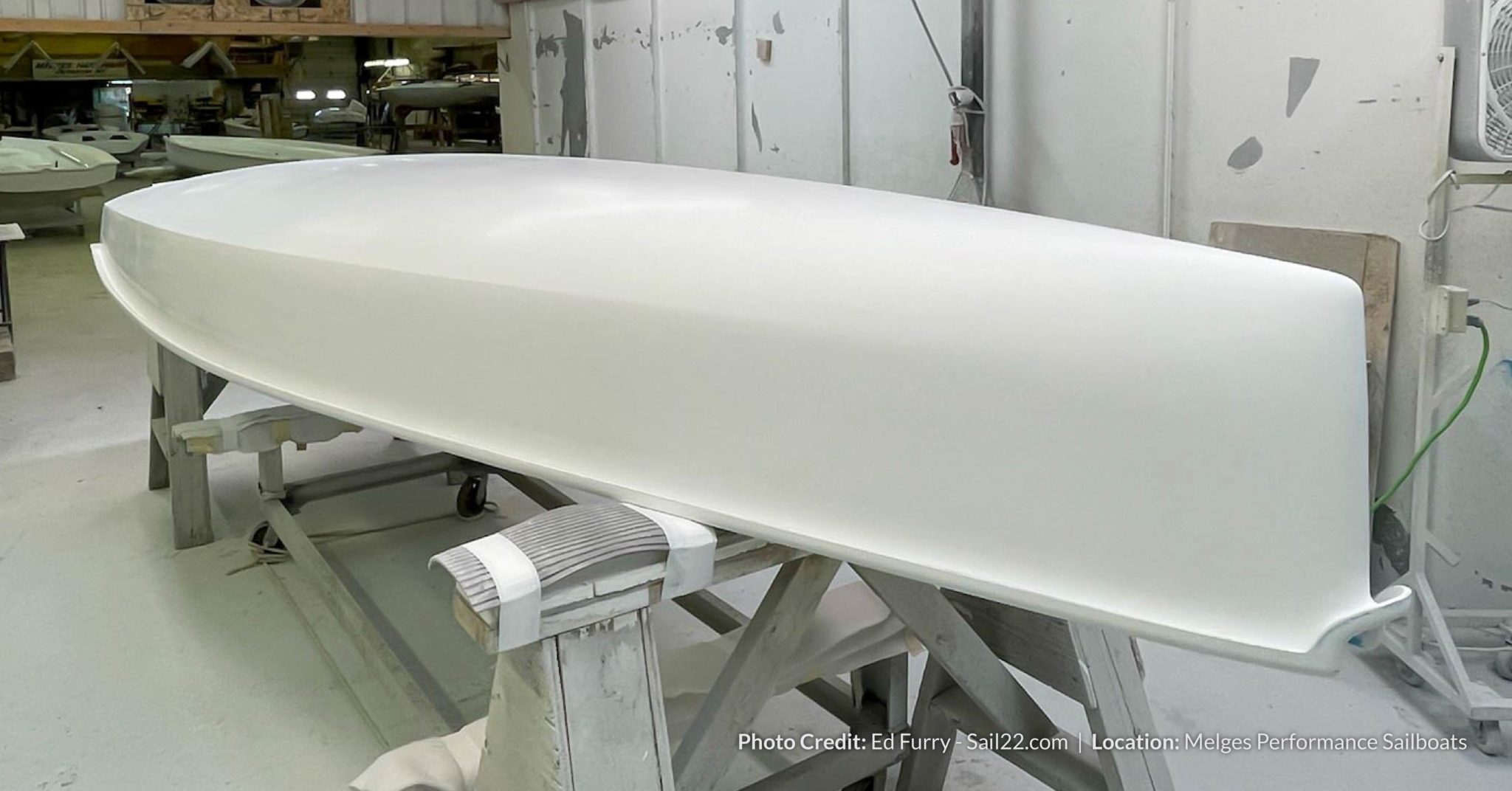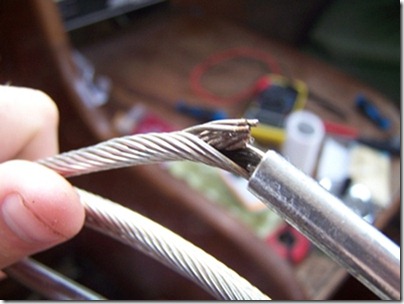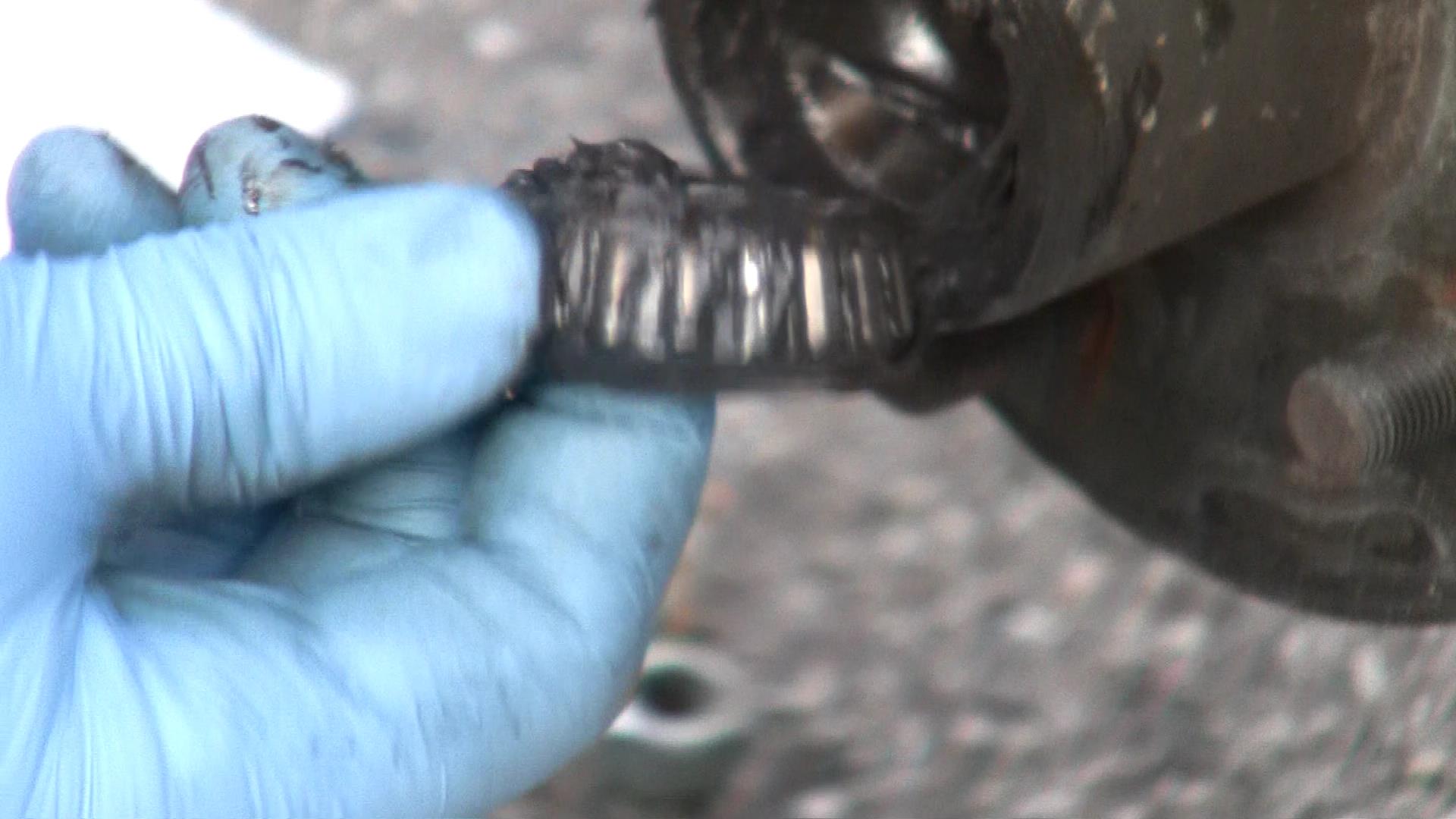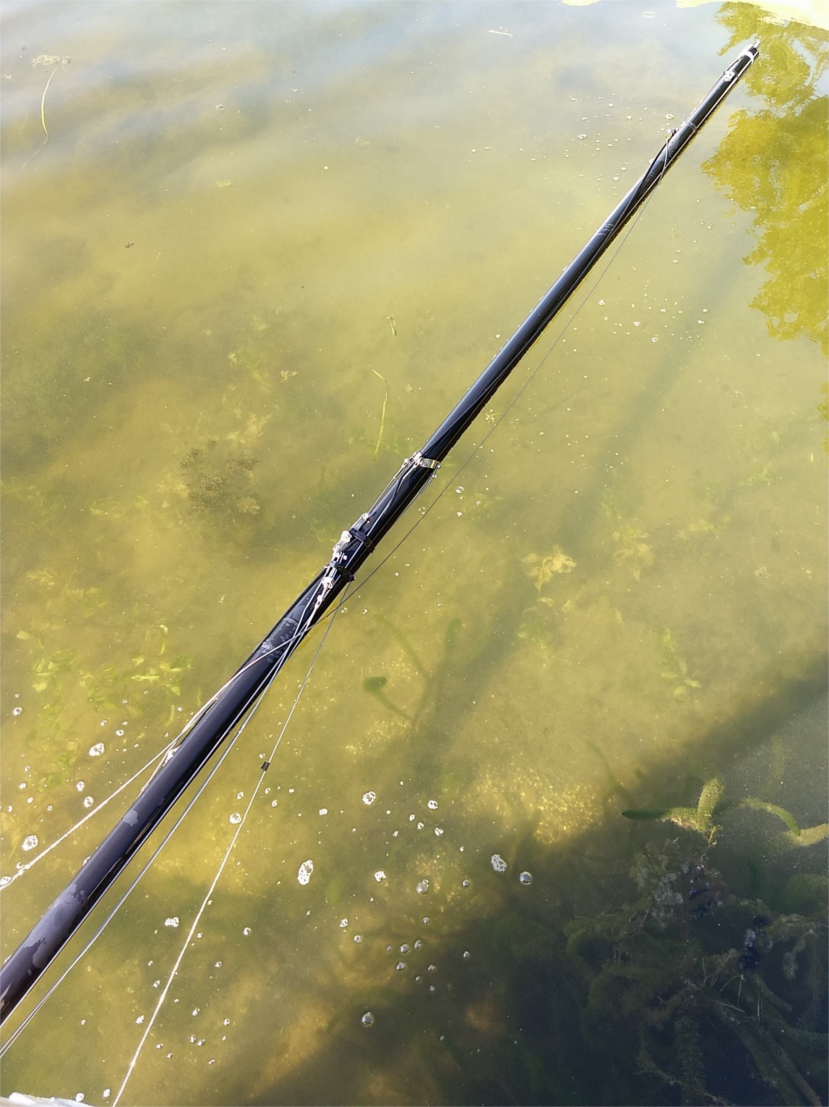How much effort should you spend on hull smoothness? We decided to investigate this after seeing a variety of approaches. Many (maybe most) fast sailors put time into polishing the hull, but others don’t bother.
Our primary source for this article is A Smooth Bottom is a Fast Bottom from the GP14 class website. This article is an easy read and the best summary we found. Author Paul Grimes was a Collegiate All-American sailor at Brown University and has experience in hydrodynamics and marine yacht services. We also referred to Sailing Theory and Practice, by C.A. Marchaj
Hull Smoothness and Speed – Data
Hull drag results from several factors. These factors have different names, depending on which book you read.
- Skin friction drag – the friction from the hull sliding through the water. A smooth hull reduces skin friction.
- Form drag – related to the streamlining of the hull and foils.
- Wave-making resistance – related to the slowing effect of the waves produced at the bow and stern by the boat’s movement.
- Induced resistance – due to leeway as the boat slides to leeward while sailing upwind.
Skin friction causes a substantial portion of total drag. Marchaj’s data from towing tests shows that skin friction for an International Canoe is 80% of total drag at 3 knots. Skin friction increases with boat speed, but other the forms of hull drag increase more, so skin friction is only 40% of total drag at 6 knots.
What is the speed advantage of a smooth hull? We could not find definitive speed data. Marchaj’s data only compares a boat with a clean bottom to a boat with a foul bottom. With the same driving force, the clean-bottom boat travels 0.27 knots faster than the foul-bottom boat when moving at 4 knots. The difference shrinks to 0.14 knots when the boats are moving at 6 knots. These are significant differences.
Since we couldn’t definitive data beyond foul and clean hulls, we’ll have to review the concepts of laminar and turbulent flow to get more answers about hull smoothness.
Laminar and Turbulent Flow
The No-Slip Condition and the Boundary Layer
It may be counterintuitive, but the water molecules immediately next to the moving hull are pressed against the hull and adhere to it – they don’t slip. This is true regardless of the hull’s smoothness. These molecules slow down the water molecules “above” them, and so on until the water further from the hull is no longer affected. The affected layer is called the boundary layer. Skin friction drag is determined by the type of flow within the boundary layer.
The type of flow in the boundary layer determines the amount of skin drag.
- In laminar flow, the water molecules in the boundary layer all flow in the same direction – parallel to the hull surface.
- In turbulent flow, the water molecules move more chaotically.
Benefits and Limitations of Laminar Flow
Laminar flow reduces skin friction by as much as 80%, compared to turbulent flow. However laminar flow is fragile. It turns into turbulent flow under several conditions.
- Surface is not fair (bumps or dents).
- Surface is not extremely smooth (highly polished), especially in the forward part of the hull.
- Water is flowing fast. At speeds greater than 4 knots or so, boats can’t sustain laminar flow over the hull length, regardless of smoothness.
- Distance traveled along the surface is long. As the distance traveled becomes long, it becomes impossible to sustain laminar flow, no matter how smooth the hull.
Turbulent Flow
Although turbulent flow causes more drag, there’s still a very thin laminar layer in turbulent flow. The skin drag is minimized if the surface roughness is less than this thin laminar layer.
Conclusions about Hull Smoothness
The theory leads to the following conclusions about how much you should do about hull smoothness.
Fair the Hull
To be competitive your hull should be fair. Small undulations over a distance are not significant. Dents and bumps, especially those with sharp edges are more significant, as they will trip the flow from laminar to turbulent.
Polish to 400 Grit for Acceptable Results
Even with a highly polished hull, boats moving faster than several knots will transition to turbulent flow within the first several feet of hull. In turbulent flow, more roughness is acceptable. Grimes says that sanding to 400 grit is adequate if the flow is turbulent.
Polish to 1200-1500 Grit Equivalent for Best Results
The best chance for sustaining laminar flow is with a very smooth (e.g., 1200-1500 grit or greater) hull traveling at low speeds (light air). Pay special attention to the forward part of the hull, since roughness there will trip the flow to turbulent sooner.
For light air and overall peace of mind, polishing to 1200-1500 grit is not outlandish, but only if you have time to do the more important stuff – like practicing.
Other Hull Drag Factors
Waxing and Water Beading
Beading of water on the hull has no effect on skin friction drag. The no-slip condition still holds true. If you put wax on just to get beading, you may make the surface rougher. We’ll see more about this in a future article.
Foil Smoothness
The foils (boards and rudder), being narrower, can sustain laminar flow over their entire surface. Foil smoothness is thus more important. We’ll cover this in a separate article.





